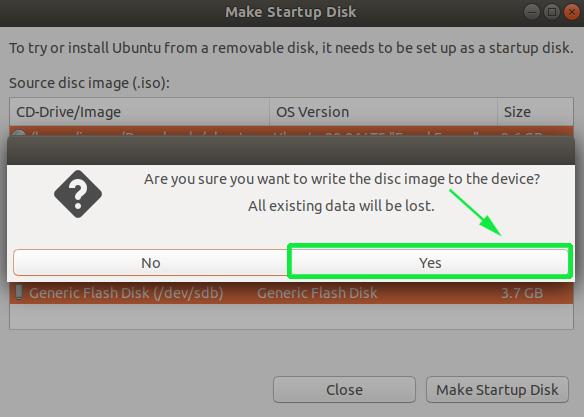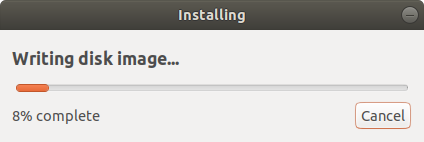Sometimes you may want to create recovery disk in Ubuntu, so that in case your system crashes or OS becomes corrupt, you can easily boot your system and recover it. Recovery disk is also known as startup disk or bootable disk. In this article, we will learn how to create startup disk for Ubuntu.
Here are the key benefits of startup disk: You can use it to:
- Install Ubuntu on PC
- Use Ubuntu without installing it on your PC
- Repair or Recover corrupted OS
How to Create Startup Disk for Ubuntu
There are several ways to create bootable disk in Ubuntu. Before proceeding, you need an ISO image of Ubuntu, and a removable USB drive of at least 4GB space.
1. Create startup disk using dd command
This is one of the easiest ways to create bootable disk in Ubuntu, or any other Linux system. Plug in your USB drive. Run lsblk command to list all mounted drives and identify your USB device volume among them.
$ lsblk
Unmount the USB drive with the following command.
$ sudo umount /dev/sdb
Next, run the following command to create bootable disk. Replace ubuntu-20.04-beta-desktop-amd64.iso with the file name of your Ubuntu ISO image.
$ sudo dd if=ubuntu-20.04-beta-desktop-amd64.iso of=/dev/sdb bs=4M
Wait for a few minutes for disk creation to complete. You will see output like the following.
670+1 records in 670+1 records out 2870923434 bytes (2.8 GB, 2.6 GB) copied, 160.45 s, 19.7 Mb/s
Now you can eject the USB drive and use it as a startup disk.
2. Create Ubuntu Using ddrescue command
Here is another way to create bootable disk in Ubuntu, using ddrescue, a popular data recovery tool. It is generally used to retrieve data from hard disk, USB, etc. It can also be used to write ISO to a startup disk.
Open terminal and run the following command to install ddrescue. Please note, the Ubuntu repositories refer to it as gddrescue. However, while calling the command you need to run ddrescue command.
$ sudo apt install gddrescue
Once ddrescue is installed, insert your USB drive and run lsblk command to list and identify your USB device volume.
$ lsblk
Next use the following command to write Ubuntu ISO image to USB.
$ sudo ddrescue path/to/.iso /dev/sdx --force -D
For example, here is the command to write ISO image ubuntu-20.04-beta-desktop-amd.64.iso to USB disk mounted at /dev/sdb
$ sudo ddrescue ubuntu-20.04-beta-desktop-amd64.iso /dev/sdb --force -D
It will take a few minutes to complete and your USB drive will be ready to use.
3. Using Ubuntu Startup Disk Creator
Recent Ubuntu versions ship with Startup Disk Creator that allows you to easily create Live USB from ISO image. You can open it by clicking Activities at the top left corner of desktop and searching for it in application manager. Click Startup Disk Creator to launch it.

You will see the following window after it is launched. The upper section displays the ISO path, along with OS version and file size. If all values look correct, click Make Startup Disk to start creating on bootable drive.

You will get a final confirmation dialog box, asking you whether to proceed with disk creation, or to abort it. Click Yes to start disk creation. You may be asked for your password for authentication. Provide it to proceed further.

The Startup disk creator will start creating your bootable disk and showing live progress bar in a small window.

Once the disk creation is complete, you will see a popup notification as shown below, saying that all went well.

You can click Test Disk to try out Ubuntu, or Quit to start using the new bootable disk.
In this article, we have learnt 3 different ways to create bootable startup disk in Ubuntu. You can use any of the methods as per your requirement.
Also read:
How to Install Fail2ban in Docker
Disk Utilities in Linux
How to Return Multiple Values from Python Function
How to Iterate Through List of Dictionaries in Python
How to Setup vnstat Network Monitoring Tool
Related posts:
How to Rename Downloaded File in Wget
How to Remove Startup Applications in Ubuntu
How to Disconnect User from SSH Connection
How to Make POST Request with cURL
How to Generate Random Password in Linux
How to Uninstall SQL Server in Ubuntu
How to Debug Shell Script
How to Return Value in Shell Script Function

Sreeram has more than 10 years of experience in web development, Python, Linux, SQL and database programming.
